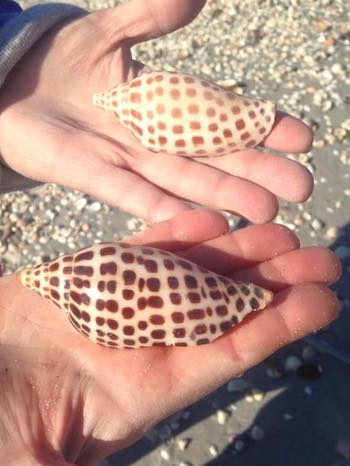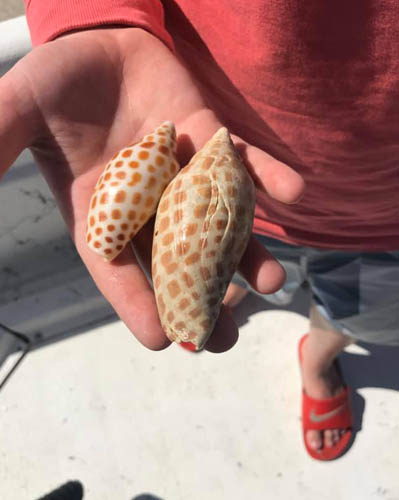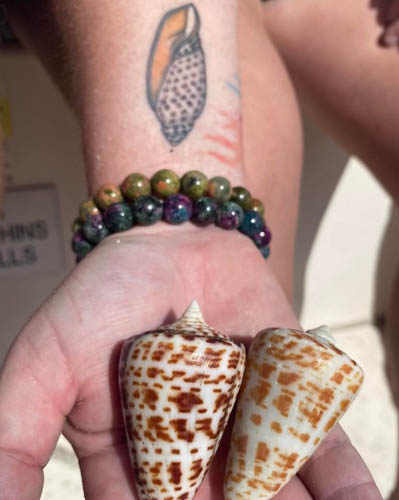Imagine strolling along a serene beach, the warm sun on your back, as waves gently deposit nature’s treasures at your feet. Shelling in Naples and Marco Island is more than a hobby—it’s a unique experience that blends adventure, relaxation, and discovery. The soft sands, tranquil waves, and incredible diversity of marine life create the perfect backdrop for this captivating activity.
This article addresses the most common questions about shelling, covering everything from the best locations to eco-friendly practices and preparation tips. Whether you’re planning your first shelling trip or are a seasoned collector, these FAQs will help you make the most of your time in Southwest Florida. From beginners seeking to find their first shell to experts on the hunt for rare treasures, there’s something for everyone in these tropical paradises.
For a complete breakdown of the best locations, tips, and practices, learn everything you need to know about shelling in Southwest Florida. Embark on a journey that transforms a simple walk along the beach into a thrilling adventure full of discoveries.
FAQs Section
Shelling Basics
What is shelling, and why is it so popular?
Shelling, or the collection of seashells, is a beloved pastime for beachgoers worldwide. It’s popular because it offers a meditative connection with nature while rewarding collectors with beautiful, tangible souvenirs. Each shell tells a story of marine life, ocean currents, and the ever-changing landscape of the sea. The diversity of shells found in Southwest Florida, combined with the thrill of uncovering rare finds, makes it a favorite activity in Naples and Marco Island. Families, nature enthusiasts, and photographers alike are drawn to this peaceful yet engaging pursuit.
Why are Naples and Marco Island considered premier shelling destinations?
Naples and Marco Island are renowned for their pristine beaches, calm Gulf waters, and abundant marine life. Unique Gulf currents deposit a wide variety of shells on their shores, from common finds to rare treasures like the Junonia. These currents act as nature’s conveyor belt, delivering fresh collections of shells daily. Combined with the area’s commitment to conservation and cleanliness, these beaches provide an unparalleled experience.
How does shelling differ from other beach activities?
Unlike sunbathing or swimming, shelling is an active exploration of the shoreline. It engages collectors in spotting, identifying, and sometimes digging for shells, making it a more immersive and rewarding experience. Shelling combines elements of relaxation and adventure, providing a sense of accomplishment with every unique shell discovered. It’s also an educational opportunity, teaching enthusiasts about marine ecosystems and conservation practices.
Can beginners enjoy shelling in Naples and Marco Island?
Absolutely! Shelling is accessible to all ages and experience levels. Beginners often find a variety of shells right along the shore, while more seasoned collectors can use tools like sifters or join guided tours for greater success. Families with children will especially enjoy the simplicity and excitement of finding colorful shells scattered along the sand. With a little patience and curiosity, anyone can discover treasures on these beaches.
Are there other activities to pair with shelling?
Yes, Naples and Marco Island offer a range of complementary activities, including dolphin-watching tours, kayaking, and nature walks. Many visitors combine shelling with these adventures for a well-rounded coastal experience. Imagine starting your morning with a peaceful shelling excursion, followed by an afternoon of paddleboarding or exploring nearby wildlife preserves. The options are endless and enrich the overall experience.
Best Shelling Locations
What are the top shelling spots in Naples and Marco Island?
Keewaydin Island and Tigertail Beach are two standout locations, offering an abundance of shells and serene settings. For a quieter experience, head to Hideaway Beach or Sand Dollar Spit. Each of these locations provides a unique blend of natural beauty and shelling opportunities. Keewaydin’s remote accessibility ensures an untouched shoreline, while Tigertail’s tidal pools are a magnet for shell collectors.
Are there any hidden gems for shelling?
Lesser-known beaches like Barefoot Beach and Clam Pass often surprise visitors with their unique finds. These locations tend to be less crowded, giving shellers a peaceful environment to explore. Barefoot Beach, for instance, is ideal for those seeking a tranquil setting, while Clam Pass offers a charming mangrove-lined boardwalk that leads to its picturesque beach. Such hidden gems provide rewarding experiences away from the bustling main beaches.
How can I access Keewaydin Island?
One of the top spots for collecting rare finds is Keewaydin Island shelling, offering pristine sands and secluded beaches. These services often include expert guides to enhance your trip. For those without their own vessel, local ferry services provide affordable and convenient transportation to this pristine island. Once there, the serene environment and abundance of shells make it well worth the effort.
What makes Tigertail Beach a great shelling destination?
For a family-friendly experience, Tigertail Beach shelling provides easy access to incredible treasures. Tigertail Beach is famous for its shallow tidal pools, which trap a variety of shells. Its accessibility and family-friendly amenities make it an ideal choice for shelling enthusiasts of all ages. The beach’s unique geography creates microhabitats where a wide range of shells accumulate. From conch and scallops to rare finds, Tigertail’s shoreline never disappoints. Additionally, its onsite facilities make it a convenient option for families.
Are private beaches better for shelling?
Private beaches can be excellent for shelling due to reduced foot traffic, but access is often limited to guests of resorts or private homeowners. Public beaches like those in Naples and Marco Island still offer incredible shelling opportunities. Many shellers find that timing and technique matter more than exclusivity, and public beaches can yield just as many treasures when visited during optimal conditions.
Timing and Seasons
When is the best time of year to go shelling?
Winter is the prime season for shelling, as colder weather and stronger Gulf currents bring a fresh wave of shells ashore. The period after storms is also excellent, as winds and waves uncover hidden treasures. Shellers visiting during these times can expect larger quantities and a greater variety of shells. Don’t miss these seasonal tips for shelling.
Why is low tide important for shelling?
Low tide exposes parts of the beach that are usually underwater, revealing a greater variety of shells. Morning low tides are particularly productive, as the beach is often undisturbed by other visitors. Shellers can access areas that are typically submerged, increasing their chances of finding rare or intact specimens. Observing tide charts before planning your trip can significantly enhance your shelling experience.
Can you go shelling year-round?
Yes, shelling is possible year-round in Naples and Marco Island. While winter offers the best conditions, summer mornings can also be fruitful, especially in less crowded areas. Every season has its charm, with shells washing ashore daily thanks to the area’s dynamic Gulf currents. Shellers who adapt to seasonal changes can enjoy successful outings any time of the year.
How do weather conditions affect shelling?
Storms and strong winds often churn up the seabed, bringing fresh shells to shore. However, extreme weather can make shelling unsafe, so always check the forecast before heading out. The best time to shell after a storm is typically within 24-48 hours, as new deposits of shells settle along the coastline. These natural events can create exceptional opportunities for collectors.
Is shelling better on certain days of the week?
Weekdays are generally better for shelling, as fewer people visit the beach. This gives you a better chance to find untouched shells. Early mornings, regardless of the day, are often the most productive due to minimal human interference. Combining the right day with the right time can significantly improve your shelling success.
Gear and Preparation
What are the must-have items for a shelling trip?
Essentials include a mesh bag for collecting shells, a shell sifter, sunscreen, water shoes, and plenty of water. For longer excursions, consider bringing a small cooler and a lightweight chair. These items ensure comfort and efficiency, allowing you to focus on the joy of shelling. Be fully prepared by packing the right gear for a successful shelling trip.
Are specific tools required for successful shelling?
While you can collect shells by hand, tools like sifters and small shovels make it easier to uncover buried treasures. These are especially useful in areas with fine sand or tidal pools. Advanced tools can also include lightweight rakes for sifting through larger deposits. Using the right gear can transform a casual outing into a highly productive experience.
How do I prepare for a shelling trip?
Start by checking the tide charts and weather forecast. Dress appropriately for the sun and surf, and pack light but efficiently. Early mornings are often the most productive, so plan to arrive at the beach before sunrise. Adequate preparation ensures a smooth and enjoyable trip, with fewer interruptions and greater success in finding shells.
Do I need water shoes for shelling?
Water shoes are highly recommended for protecting your feet from sharp shells and hidden debris. They also provide better grip on slippery or uneven surfaces. In addition to safety, they enhance mobility, allowing you to explore tidal pools and rocky areas with ease. Durable and comfortable footwear is a small investment for a safer shelling experience.
Should I clean shells immediately after collecting them?
It’s best to rinse your shells with fresh water as soon as possible to remove sand and salt. Avoid using bleach or harsh chemicals, as these can damage the shells. Simple cleaning practices preserve the natural beauty of your finds and prepare them for display or crafting. Proper care ensures your collection remains vibrant and intact.
Rules and Etiquette
Can I collect live shells?
No, collecting live shells is illegal in Florida and harmful to marine life. Always check for living organisms inside a shell before adding it to your collection. Respecting this rule helps preserve the delicate ecosystem and ensures that future generations can enjoy shelling. Learn more about how to shell responsibly.
Are there limits to how many shells I can take?
While there are no strict quantity limits, it’s essential to collect responsibly and leave enough shells for others and the ecosystem. Moderation ensures that the beaches remain rich with shells and that wildlife dependent on them is not disrupted. Ethical collecting fosters a balance between personal enjoyment and environmental stewardship.
Is it okay to shell on private property?
Always respect private property boundaries and stick to public beaches or areas you have permission to access. Trespassing can lead to fines or other legal consequences. Public beaches, with their abundant shelling opportunities, provide plenty of options without infringing on private spaces.
What should I do if I find a rare or fragile shell?
Consider leaving rare or fragile shells in place, as they may serve as a home or resource for marine life. If you choose to collect them, handle with care to avoid damage. Photographing such finds can also be a satisfying way to document your discovery without removing it from its natural environment.
Are there restrictions on shelling tools?
Most standard tools like sifters and small shovels are allowed, but always check local guidelines to ensure compliance. Restrictions typically aim to protect sensitive areas and marine life. Familiarizing yourself with local rules ensures a worry-free and respectful shelling experience.
Enhancing the Experience
What are some rare shells to look for?
The Junonia is the holy grail of shelling in this area, but other sought-after finds include the Scotch Bonnet, Lion’s Paw, and Alphabet Cone. Each of these shells is prized for its unique characteristics and beauty. Learn how to identify shells in Naples and Marco Island.
Are there guided shelling tours available?
Yes, guided tours often include transportation to prime locations, expert advice, and even additional activities like dolphin spotting. Experienced guides can share local knowledge, improving your chances of finding rare shells and enhancing your overall experience.
How can I make shelling more enjoyable for kids?
Turn shelling into a treasure hunt with challenges like finding the largest or most colorful shell. Bring snacks and shade to keep the experience fun and comfortable. Engaging children’s curiosity transforms shelling into a family-friendly adventure full of memorable moments.
Can I display my shell collection creatively?
Absolutely! Popular options include shadow boxes, wind chimes, or decorative jars. A cleaned and polished shell collection can also serve as a beautiful keepsake. Creative displays turn your finds into lasting memories and unique home decor.
What should I do if I want to learn more about shelling?
Join local shelling groups or attend workshops to deepen your knowledge. Many experts are happy to share tips and tricks for identifying and preserving your finds. Engaging with the shelling community enhances your skills and provides valuable insights into this fascinating hobby.
Conclusion
Naples and Marco Island offer a shelling experience like no other, with their pristine beaches, abundant marine life, and opportunities for discovery. By following the tips and advice in this guide, you’ll be well-prepared to enjoy this rewarding activity. These beaches are not only a treasure trove of shells but also a gateway to appreciating the beauty and complexity of marine ecosystems.
Ready to start planning your trip? Check out shelling in Southwest Florida for even more tips, top locations, and seasonal insights. Whether you’re a casual beachgoer or a dedicated shell collector, the adventure awaits!





